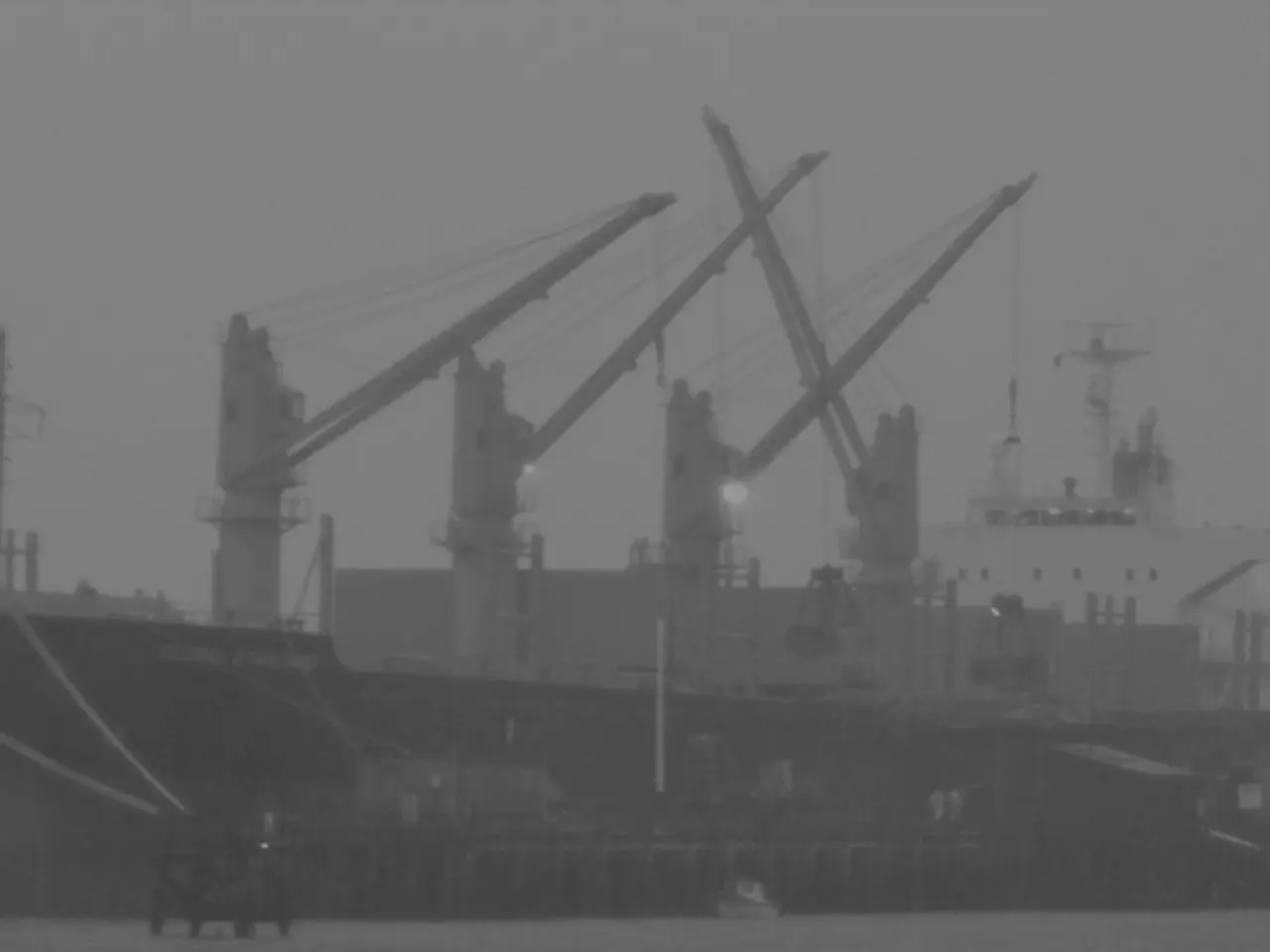Navies of India and the Philippines initiate inaugural joint naval operations within the South China Sea.
India and the Philippines Conduct Joint Naval Exercises in South China Sea
Philippine President Ferdinand Marcos Jr's state visit to India, scheduled from August 4 to 7, includes a significant event - the first joint naval exercises between India and the Philippines in the disputed South China Sea. Four Indian warships, including INS Delhi (D61), INS Shakti, INS Kiltan (P30), and INS Sandhayak (Yard 3025), arrived in Manila on August 1 to participate in these exercises [1][2].
The joint naval exercises are driven primarily by a shared commitment to uphold international maritime law, particularly the United Nations Convention on the Law of the Sea (UNCLOS), and to counterbalance China's expansive territorial claims in the area. These exercises mark India's first naval patrol with the Philippines in the disputed waters, symbolizing a strategic effort to build bilateral military cooperation and enhance operational readiness in a volatile maritime region [1][2][3].
Key reasons for these joint exercises include:
- Upholding international maritime law: Both countries emphasize adherence to UNCLOS and the protection of each other's exclusive economic zones (EEZs), countering China's broad claims over the South China Sea [1].
- Strategic pushback against China: China's claims over nearly the entire South China Sea, which overlap with Philippine claims, have led to tensions and maritime confrontations. The joint patrol is a response to these challenges, showing solidarity and a united front against unilateral control, as China frequently harasses Philippine vessels [2][3].
- Strengthening bilateral military ties: Besides India's involvement in multilateral groupings like the Quad, this cooperation represents India's effort to diversify its Indo-Pacific strategy through direct bilateral engagements with ASEAN countries, increasing trust, interoperability, and regional presence [2][3].
- Supporting regional stability: The patrols aim to improve joint preparedness, communication protocols, and operational synergy to promote stability in international waters and protect maritime interests [3].
Implications of these joint exercises include:
- Potential escalation of tensions with China: The partnership is likely to provoke discontent in Beijing, which monitors these operations closely but has so far not intervened aggressively during these drills [1].
- Enhanced regional security cooperation: It broadens the array of countries actively engaging to balance Chinese influence in the Indo-Pacific, signaling a more multipolar approach to maintaining freedom of navigation and security in the South China Sea [2][3].
- Diplomatic strengthening: The timing coincides with the Philippine President Ferdinand Marcos's state visit to India, reflecting deeper diplomatic and defense ties aligned with shared strategic interests [1][2][3].
During the joint naval exercises, General Romeo Brawner, the Chief of Staff of the armed forces of the Philippines, stated that they were shadowed but did not experience any untoward incidents [4]. The South China Sea has been a long-standing disputed region, contested by China, and the Philippines has been among the most vocal in curtailing China's influence over the region [5].
The visit of President Marcos Jr to India also includes talks with Indian President Droupadi Murmu, Prime Minister Narendra Modi, External Affairs Minister Dr S Jaishankar, and Health Minister JP Nadda [6]. However, no information was provided about any response from China regarding the joint naval exercises.
In conclusion, the India-Philippines joint naval exercises in the South China Sea represent a strategic collaboration to uphold international maritime laws, counter Chinese territorial assertiveness, and strengthen bilateral ties, with significant implications for regional maritime security dynamics and China’s regional influence [1][2][3].
References: [1] The Hindu. (2022, August 2). India, Philippines to hold joint naval exercises in South China Sea. Retrieved from https://www.thehindu.com/news/international/india-philippines-to-hold-joint-naval-exercises-in-south-china-sea/article65848514.ece
[2] NDTV. (2022, August 2). India, Philippines to hold joint naval exercises in South China Sea. Retrieved from https://www.ndtv.com/india-news/india-philippines-to-hold-joint-naval-exercises-in-south-china-sea-3152506
[3] Reuters. (2022, August 2). India, Philippines to hold joint naval exercises in South China Sea. Retrieved from https://www.reuters.com/world/india/india-philippines-hold-joint-naval-exercises-south-china-sea-2022-08-02/
[4] Rappler. (2022, August 2). Philippines, India begin joint naval exercises in South China Sea. Retrieved from https://www.rappler.com/nation/342068-philippines-india-joint-naval-exercises-south-china-sea
[5] Al Jazeera. (2022, August 2). Philippines, India to conduct joint naval exercises in South China Sea. Retrieved from https://www.aljazeera.com/news/2022/8/2/philippines-india-to-conduct-joint-naval-exercises-in-south-china-sea
[6] The Indian Express. (2022, August 3). India, Philippines to hold joint naval exercises in South China Sea during President Marcos's visit. Retrieved from https://indianexpress.com/article/world/asia/india-philippines-to-hold-joint-naval-exercises-in-south-china-sea-during-president-marcos-visit-8515505/
- Inevitably, the discussion of the joint naval exercises between India and the Philippines in the South China Sea extends to the realm of international politics and diplomacy. President Marcos Jr's ongoing state visit to India involves negotiations not only with military officials but also with the Indian President, Prime Minister, External Affairs Minister, and Health Minister.
- In the complex web of global news, the joint naval exercises serve as a notable development in the backdrop of war-and-conflicts, particularly in the Indo-Pacific region. China's territorial claims in the South China Sea, a source of long-standing contention, are countered by these exercises, aimed at upholding health (international maritime law) and regional stability.
- The casino-and-gambling sector also follows this unfolding political scenario closely, as key casino personalities and strategic analysts often weigh in on the geopolitical implications of such joint military exercises, particularly in relation to security and economic interests.
- Simultaneously, crime-and-justice agencies keep a watchful eye on the issue, given that the South China Sea is a significant trade route and any instability in the region could potentially exacerbate existing crime issues, impacting the economic interests of various nations, including India and the Philippines.




